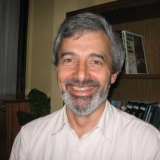In this study, we measure the value of sanitary restrictions in terms of forgone profits. For this, we model the short-run trade-off between biosecurity and profits in the aquaculture industry.
Incorporating the concept of “sanitary desirable volume (SDV)” for the salmon industry, we optimize a multiobjective model using base information from the Los Lagos region in Chile and identify a Pareto frontier. Within this setting, we analyze the shadow price of one objective in terms of the other, the effect of changes in the administrative regulations that limit fish density in the farms and the effect of prices on the Pareto frontier. We find that the effect of sanitary restrictions in terms of forgone profits is quantitatively important and that this effect is dependent on both the level of sanitary restrictions and the relative product prices. This has important implications for the design of sanitary restrictions in aquaculture. The level of the SDV should be determined carefully to avoid costly excess regulation. Moreover, market conditions can also affect the optimal level of regulation.
Files and links
Request a publication
Due to Copyright we cannot publish this article but you are very welcome to request a copy from the author. Please just fill in the information beneath.

